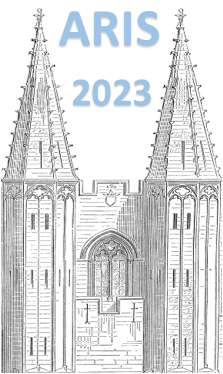Orateur
Description
The location of the neutron dripline is crucial to understand the stability of nucleonic many-body systems with extreme neutron-to-proton ratios.
It provides a benchmark for nuclear theories and mass models, and an important key to understand underlying nuclear structure and interactions.
The neutron dripline has been experimentally determined up to oxygen (atomic number $Z$ = 8) as $^{24}$O [1-4] more than 20 year ago, while no experimental confirmation has been reported for $Z$ $\geq$ 9.
We have searched for the neutron driplines, the heaviest new isotopes, of fluorine ($Z$ = 9), neon (10), and sodium (11) by the BigRIPS separator at the RIKEN RI Beam Factory.
The neutron-rich isotopes were produced by projectile fragmentation of a 345-MeV/u 450~500-pnA $^{48}$Ca$^{20+}$ beam impinging on a 20-mm-thick Be target.
No events were observed for $^{32,33}$F, $^{35,36}$Ne, and $^{38}$Na [5].
Comparison with predicted yields excludes the existence of bound states of these unobserved isotopes with high confidence levels, which indicates that $^{31}$F and $^{34}$Ne are the heaviest bound isotopes of fluorine and neon, respectively.
We have confirmed the fluorine and neon neutron driplines for the first time.
We have observed the new isotope of $^{39}$Na, which is the most neutron-rich isotope with $N$ = 28 neutron magic number [6].
The locations of the neutron dripline from oxygen to neon isotopes and the bound nature of $^{39}$Na could be explained by evolution of nuclear deformation.
By the recent large-scale shell-model calculation with $ab$ $initio$ effective $NN$ interaction [7], the oxygen dripline is determined by a new magic number of $N$ = 16, emerging by tensor force and repulsive 3 nucleon forces.
From $Z$ = 9 to 12, quadrupole deformation leads to a larger binding energy for neutrons and affects the location of the driplines.
The discovery of $^{39}$Na suggests that its ground state is deformed and the magicity of $N$ = 28 is lost.
In this talk, the experimental results will be presented to discuss the location of the neutron driplines as well as the underlying nuclear structure.
References:
[1] D. Guillemaud-Mueller $et$ $al$., Phys. Rev. C 41, 937 (1990).
[2] M. Fauerbach $et$ $al$., Phys. Rev. C 53, 647 (1996).
[3] O. B. Tarasov $et$ $al$., Phys. Lett. B 409, 64 (1997).
[4] H. Sakurai $et$ $al$., Phys. Lett. B 448, 180 (1999).
[5] D.S. Ahn, T. Kubo $et$ $al$., Phys. Rev. Lett. 123, 212501 (2019).
[6] D.S. Ahn, T. Kubo $et$ $al$., Phys. Rev. Lett. 129, 212502 (2022).
[7] N. Tsunoda et $al$., Nature (London) 587, 66 (2020).

